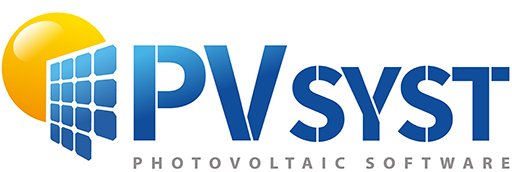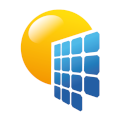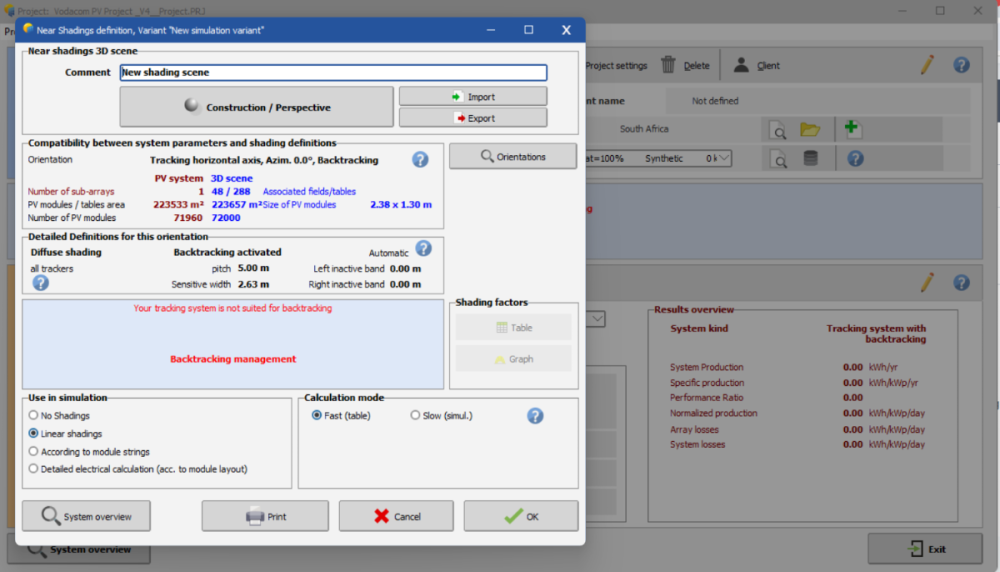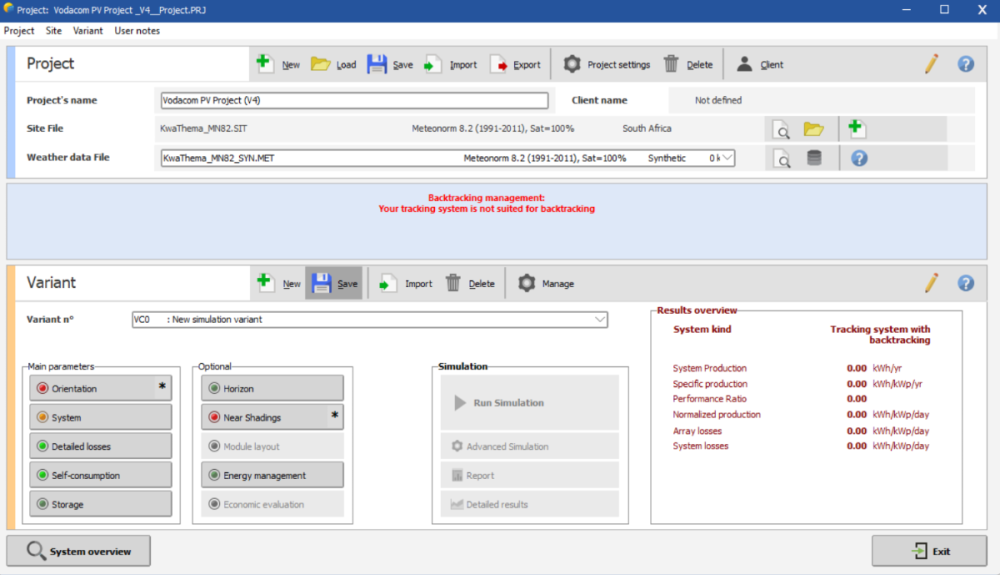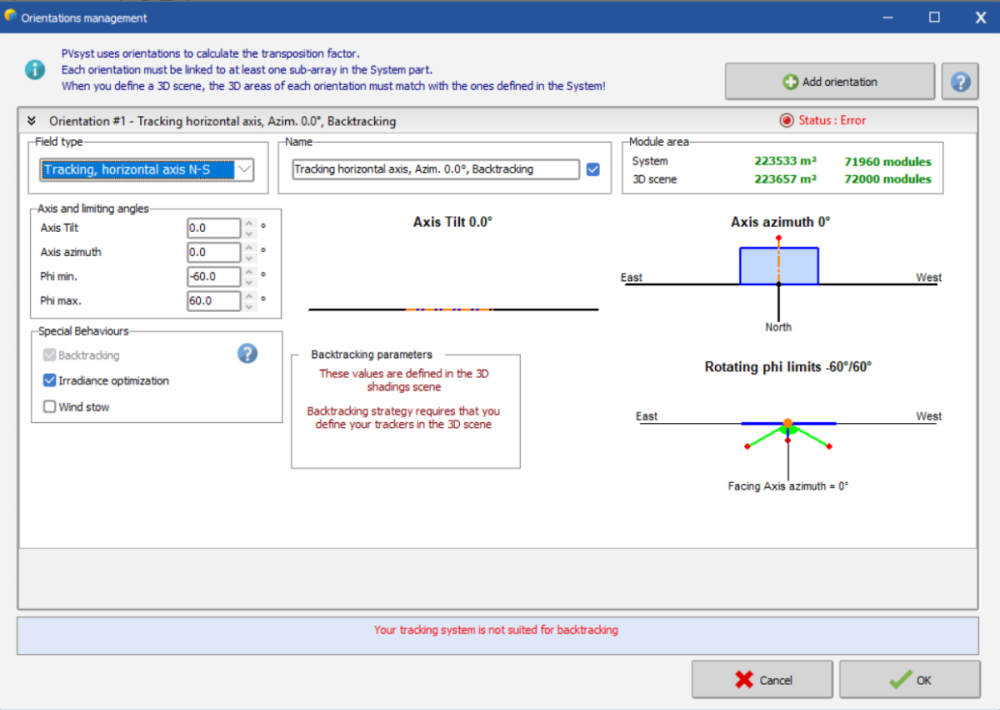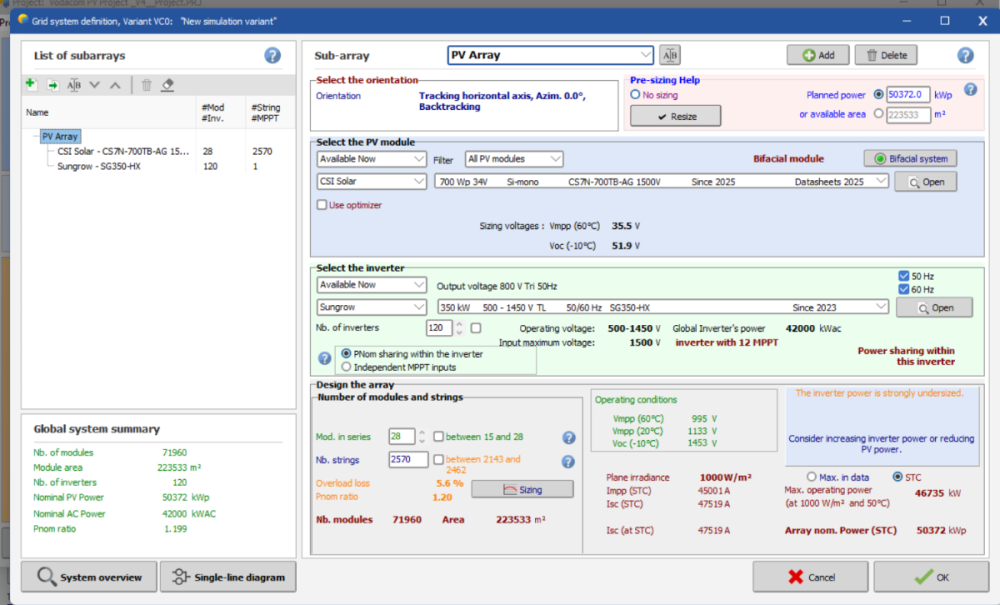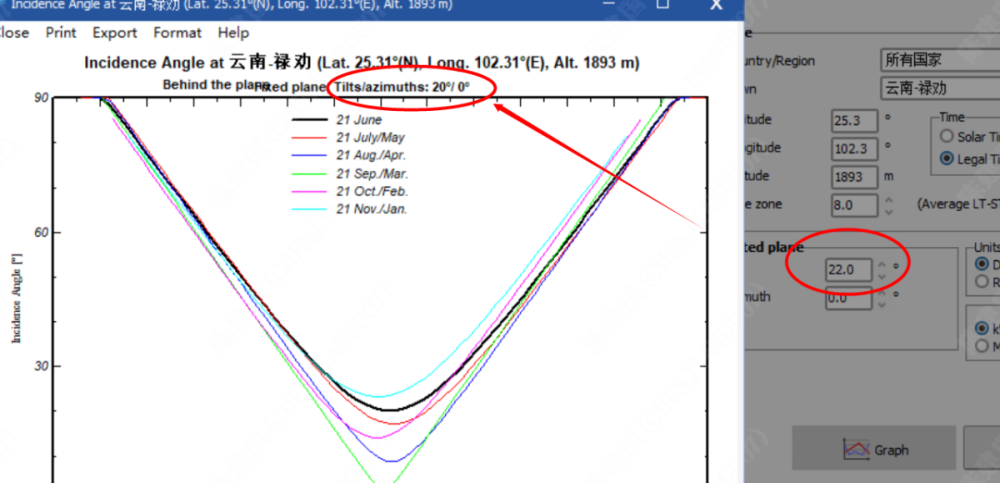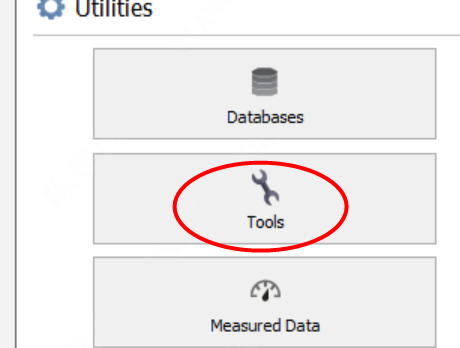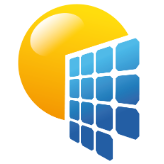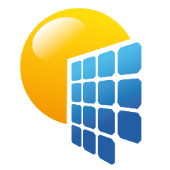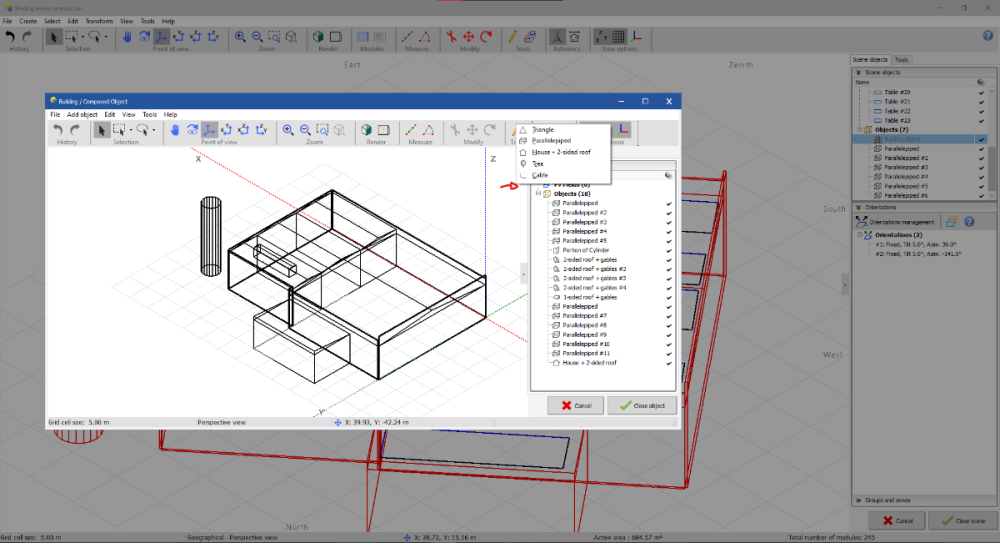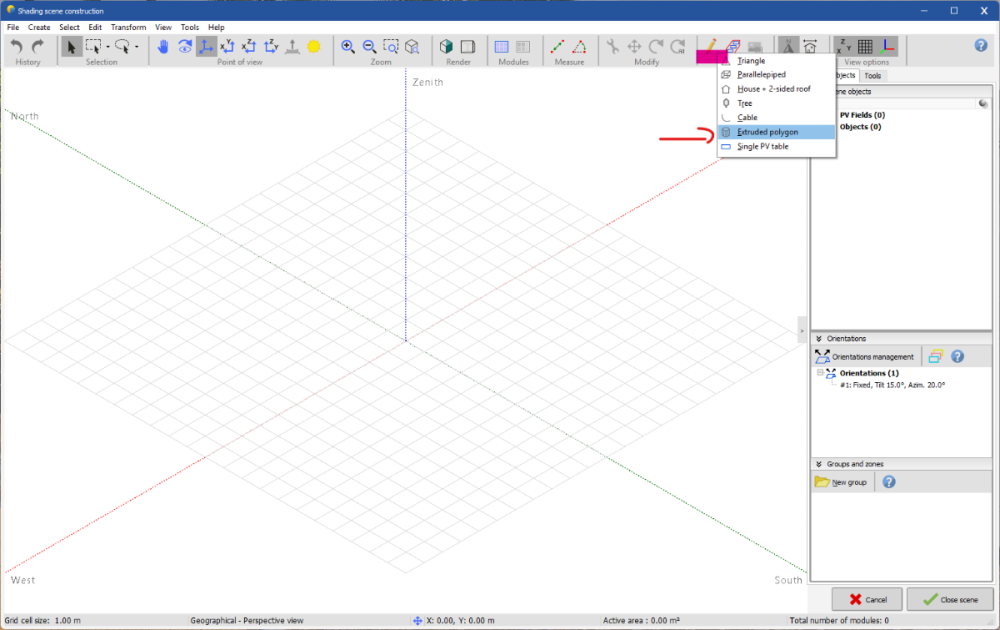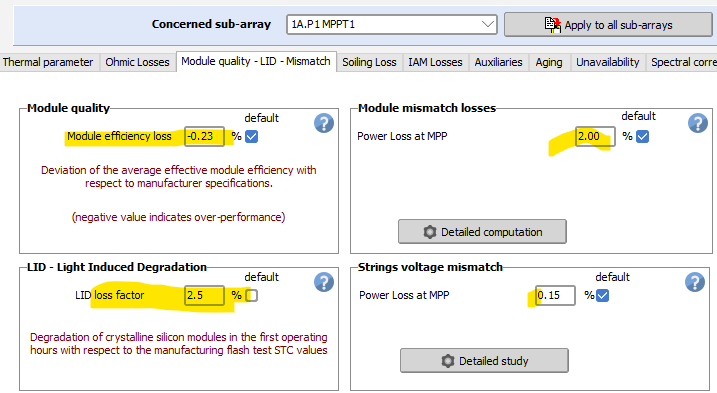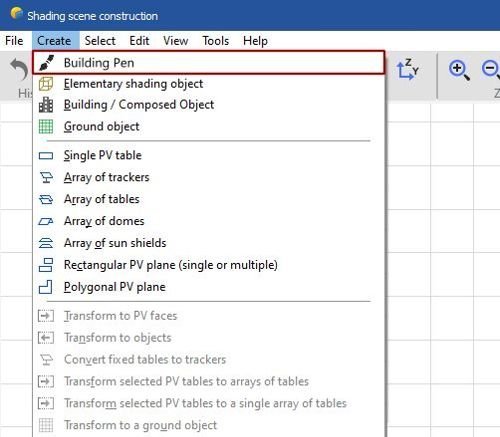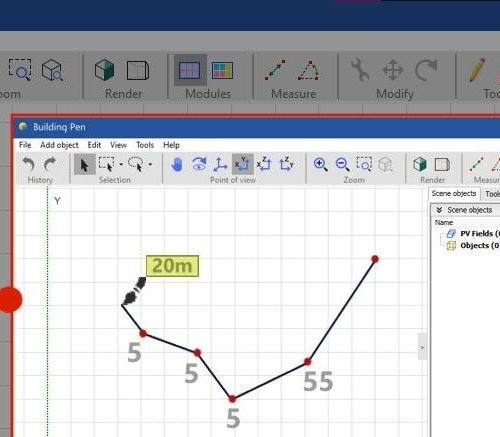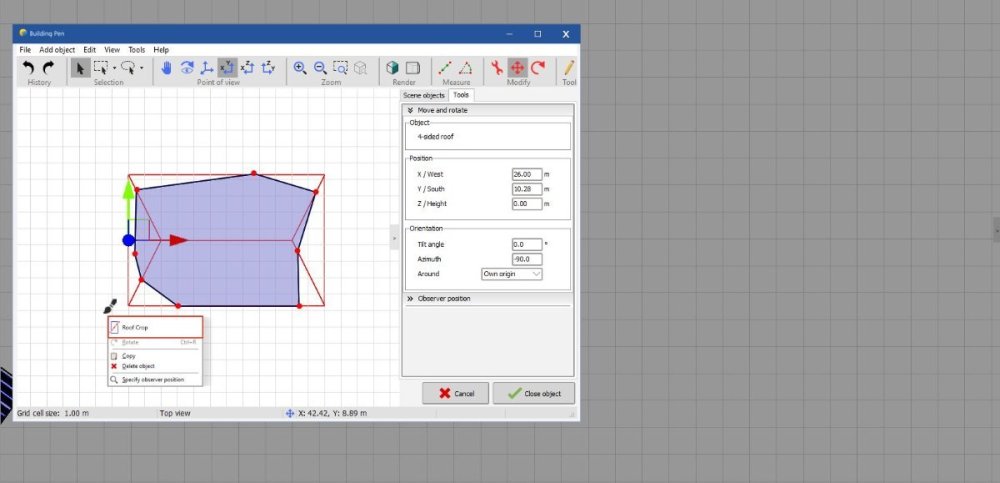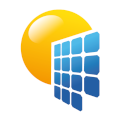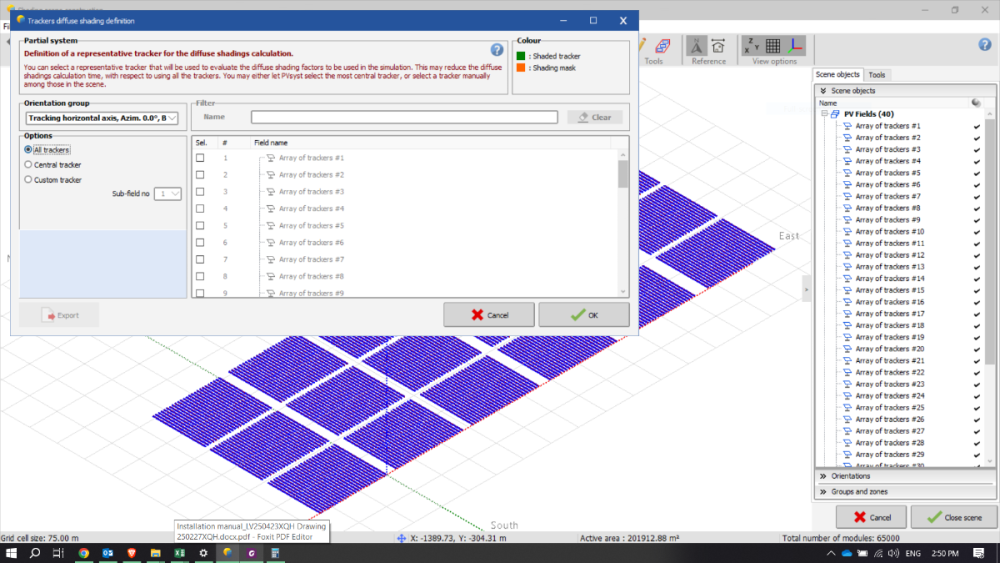All Activity
- Today
-
Backtracking Management Assistance Required
ASZulu replied to ASZulu's topic in Shadings and tracking
Hi Michele, 🙂. Thank you so much for the swift response. Yes, I was also confused by the same thing. I have shared the project file via email, as requested. Your assistance and guidance is really appreciated. -
Michele Oliosi started following Backtracking Management Assistance Required
-
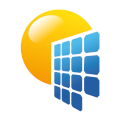
Backtracking Management Assistance Required
Michele Oliosi replied to ASZulu's topic in Shadings and tracking
Hi, this is strange. NS axis trackers (whether 3D scene or using the “unlimited trackers” optimization) should work without issue. Can you send your project (use the export button in the project window to generate a zip archive with all necessary files) over to support@pvsyst.com ? Or share a snapshot of the disposition of your 3D scene. This will allow us to look into it further. -
André Mermoud started following tilt problem
-
Yes sorry, this is an error in the graph title. The values for the curves calculation are indeed those specified in the dialog. Thank you for pointing this out. We will correct this for the next version 8.0.16.
-
ASZulu started following Backtracking Management Assistance Required
-
Hi everyone, 🙂! As a fairly new user of the software, I needed assistance with the Near Shadings for the simulation I am running. I keep getting the error stating "Backtracking Management: Your tracking system is not suited for backtracking" as shown below: Initially, I used "Unlimited Trackers with Backtracking" but noticed that PVsyst would not let me create a shading scene with this option/tacking system. This then resulted in the use of the tracking along the horizontal axis (with backtracking activated, and an azimuth of 0 degrees) as seen below. I am not sure how to proceed as the first screenshot above displays confirmation that backtracking has been activated from the "Backtracking Management" menu within "Near Shadings" and this is the only obstacle left before being allowed to run the errorless simulation. I have shared a screenshot of the System Overview below for context and convenience. Appreciate any and all help I can get on this. Thank you.
-
-
ASZulu joined the community
-
Hi, The execution of the shading factor calculation may take some time, and has to be evaluated at each simulation hour. For speeding-up the simulation execution, we calculate a table of shading factors for specific sky orientations (every 10° in tilt and 20° in azimuth). Then at each step, the simulation can calculate the exact sun's position, and interpolate in this table ("Fast" shadings calculation"). This table is also used for the elaboration of the shading factor on diffuse and on albedo integrals. You find more details in our help, for instance the treatment of the Beam component: https://www.pvsyst.com/help/project-design/shadings/calculation-and-model/treatment-of-the-beam-component.html and the shading factor table: https://www.pvsyst.com/help/project-design/shadings/calculation-and-model/shading-factor-table.html Kind regards
- Yesterday
-
Is there a detailed guidance on the differences between the "fast (table)" option and the "slow simulation" option for the near shading? In order to understand possible deviance and what is best for the project. Thanks
-
Hi! Thanks for the feedback! In fact, PVSyst already has a free drawing tool. However, even in line with my feature suggestion, I believe an upgrade to this function is still needed. Currently, the standard tool in the software can only be activated in the standard Shading Scene Construction mode. In the Building Object mode, the “Pen – Extruded Polygon” option is not available.
-
Dear Caio, Thank you for your suggestion to improve the 3D feature in PVsyst. For your first suggestion, I recommend trying the “Pen – Extruded polygon” tool (see below). It lets you draw a complex shape on the ground plane and extrude it to whatever height you need. Let me know if this helps. Regards, Muhammed Sarikaya
-
Michele Oliosi started following Report shows spectral correction applied even when it isn't
-

Report shows spectral correction applied even when it isn't
Michele Oliosi replied to LauraH's topic in Problems / Bugs
Indeed, I confirm that this is the case and is quite misleading… and also not consistent with how PVsyst usually works. You should not be able to keep the spectral correction checked if it cannot be used for some reason. Thanks for this feedback @LauraH -
André Mermoud started following Module quality - LID Mismatch
-
The "Module quality loss" represents the confidence you put yourself in the PV module real performance. See the help https://www.pvsyst.com/help/project-design/array-and-system-losses/module-quality-losses.html?h=module+quality The "Light induced degradation" affects only the P-type wafer-based cells. It is sometimes - rarely - mentioned on the datasheets. See the help https://www.pvsyst.com/help/project-design/array-and-system-losses/lid-loss.html?h=lid The "Module Mismatch loss" depends on the real module characteristics dispersion. See the Help https://www.pvsyst.com/help/project-design/array-and-system-losses/array-mismatch-losses/mismatch-loss-due-to-modules-dispersion.html?h=mismatch NB: you have little questionmarks buttons for getting help for each of these losses, please use them.
- Last week
-
Aidenn started following Module quality - LID Mismatch
-
Hi PVSyst Team, Can we determine these parameters with the module info alone? I'm using Jinko Solar - JKM590N-72HL4-BDV and JKM595N-72HL4-BDV/ Please show how do we come up with the values. Appreciate your help, ~Aidenn
-
1 - Model Pen (Building Pen) The idea is to have a free-draw mode for creating complex or unusual building shapes, with the ability to adjust the height, length, and—if possible—the curve “resolution” (i.e., the number of lines used to form curves, similar to a cylinder’s segmentation). Ideally, this tool could be integrated into the Building / Composed Object section. Personally, I’ve found it difficult to create certain shapes and structures that could be done much faster with this improvement, especially roofs. Design Suggestion: Using software like SketchUp or SolarEdge makes this process easier because they include a pen tool and are not limited to predefined models, allowing for more flexible scene composition. If this feature were implemented—considering any software limitations—it would be extremely useful to combine it with the ability to configure any roof shape based on a drawn outline, merging the best features from other tools in one place. Design Example: This tool could work in two alternative ways: Building/Object Pen – Functions like a freehand pen to draw custom shapes. Building/Object Cropper – Used only to cut or reshape predefined objects/buildings into the desired form (simpler from a general perspective). 2 - Magnetic Measure Mode This idea is much simpler than the previous one 😄. The goal is to customize the measurement tool to work faster and more accurately in determining dimensions. It could have three modes: 1. Full Magnetic Measure (Grid-Based) – Snaps measurements to whole number values (e.g., 1m, 24m, 87m). 2. No Magnetic Measure (Standard) – Works as the current free measurement tool. 3. Full Magnetic Measure (Object-Based) – Click any object edge/line to automatically display its length. That’s all for now. I’ll be back with more ideas and suggestions. I really enjoy using this software and wish the best to its developers. Thanks for your attention!
-
Caio Almeida joined the community
-
nyasha Mukosi joined the community
-
zheng joined the community
-
By default we recommend Uv=0 as this coefficient is trickier to measure and varies even more from one PV installation to the next. There can be a large difference between the wind speed from a data provider (measured at 10m above ground, not always close by) and local conditions at the module level. But yes to be more accurate you simply need to measure this coefficients on your installation. https://www.pvsyst.com/help/project-design/array-and-system-losses/array-thermal-losses
-
In-depth Inquiry on BIPV Aging, Temperature Modeling, and Loss Equations
Zahra replied to Zahra's topic in Meteo data
Thanks for respond, How about Uv? is there anyway to model it more accurate? -
Hi, A near shading loss of 2.8% for the system layout shown in your screenshot is within a reasonable range and you probably have to increase the pitch by a lot to see an effect on the near shading losses. The most accurate diffuse shading calculation will be obtained by using the "All trackers" option, as in your current example. For an exercise to better understand the impact of diffuse losses, you can instead select the "Custom tracker" option and choose a set of tables located at the very edges of the system. This option calculates shading only for the selected tables, then applies the same shading pattern to the rest of the system. If you run the simulation with "Custom tracker" selected for tables that have fewer surrounding obstacles, you should observe a decrease in near shading losses. Note that this method is only for testing and exploring the effect of table placement on diffuse shading—it is not the recommended approach for an accurate production estimate.
-
KOUOROSH PIRASGHARI joined the community
-
Hello, If you have no shading object or topography and have activated the backtracking, the near shading losses likely stem from the diffuse shading. The diffuse shading definition for trackers can be found in the Near shading window, Tools, Tracker diffuse shading definition. By for instance increasing the pitch, the diffuse shadings will be reduced.
-
indonesiaescortshub joined the community
-
Hi Experts, I was trying to run a single axis tracker model with bi-facial modules. I have created the 3D scheme and no shadings are considered from surrounding buildings / obstructions and enabled the back tracking. Still in the results I am seeing 2.8% near shading loss. What could be the reason? Can someone help me out please. Thanks in advance, Job
-
Christian joined the community
-
chai joined the community
-
Amy James joined the community
-
Kumar started following Modeling Non-Lithium Ion and Non-Lead Acid Storage Systems in PVSyst
-
I am currently working on simulating a system involving energy storage systems, and I am wondering about the capabilities of PVSyst for modeling storage technologies beyond the typical lithium-ion and lead-acid batteries. Specifically, I am interested in the following: Electrochemical storage systems: Nickel-Hydrogen batteries Flow batteries Mechanical storage systems: CO2 batteries or similar technologies Could you please confirm whether PVSyst supports the modeling of these types of storage systems, or if there are any plans to include such models in future updates? If not, could you suggest any workarounds or integration methods that might allow for their inclusion in hybrid system simulations alongside PV modules?
-
PVSyst unexpectedly closes during long batch runs
Andrés Fernández posted a topic in Problems / Bugs
Hi When I run large batches (many simulations) PVSyst runs for a few hours then suddenly closes without an error dialog. I’ve tried smaller batches without problems and monitoring Task Manager but can’t find a clear cause (like memory spikes). Any suggestions on logs to collect, known bugs, or settings to stabilize long batch runs? PVSyst Version: 8.0.14. OS: Windows 11 (full updated). RAM: 16 GB. Thanks in advance - Earlier
-
Hi, The idea behind the unlimited sheds field type, is to allow for simulation of the shadings without the complexity of the 3D scene. Thus you are always simulating the mutual shading between the rows in a 2D representation (compared to the 3D scene). One simplification with this 2D representation is that the edge effect is neglected, that the rows are unlimited long. The number of sheds are important to define since the first and last row does not have the same shadings as the rest of the rows. Thus if you have 5 rows, 4 of the rows experience mutual shadings. If you have 500 rows, 499 rows will experience mutual shadings and thus this will impact the simulation results. Note that the unlimited sheds always include mutual shadings. To run a simulation completely without shadings, you should define fixed tilted planes and not define a 3D scene (though you can then define a bifacial project since the pitch and table size are needed for the bifacial calculation). You can read more about the unlimited sheds in the following help page: https://www.pvsyst.com/help/glossary/3d-editor/shed.html?h=unlimited+sheds
-
Hello, I am running simulations in PVsyst for both monofacial and bifacial modules using the unlimited sheds configuration to avoid performing a shading scene simulation. I noticed that even when I keep the same spacing between sheds and only change the number of sheds in the layout, the simulation results (energy production and PR) still vary. I had assumed that in unlimited sheds mode, with shading simulation disabled, the number of sheds would not affect the results since the geometry is considered infinite in the transverse direction. I would like to better understand the logic and assumptions PVsyst uses regarding the number of sheds parameter, and why it impacts the results for both monofacial and bifacial modules. Thank you in advance for your help and clarifications. Best regards, Raouane Laila
